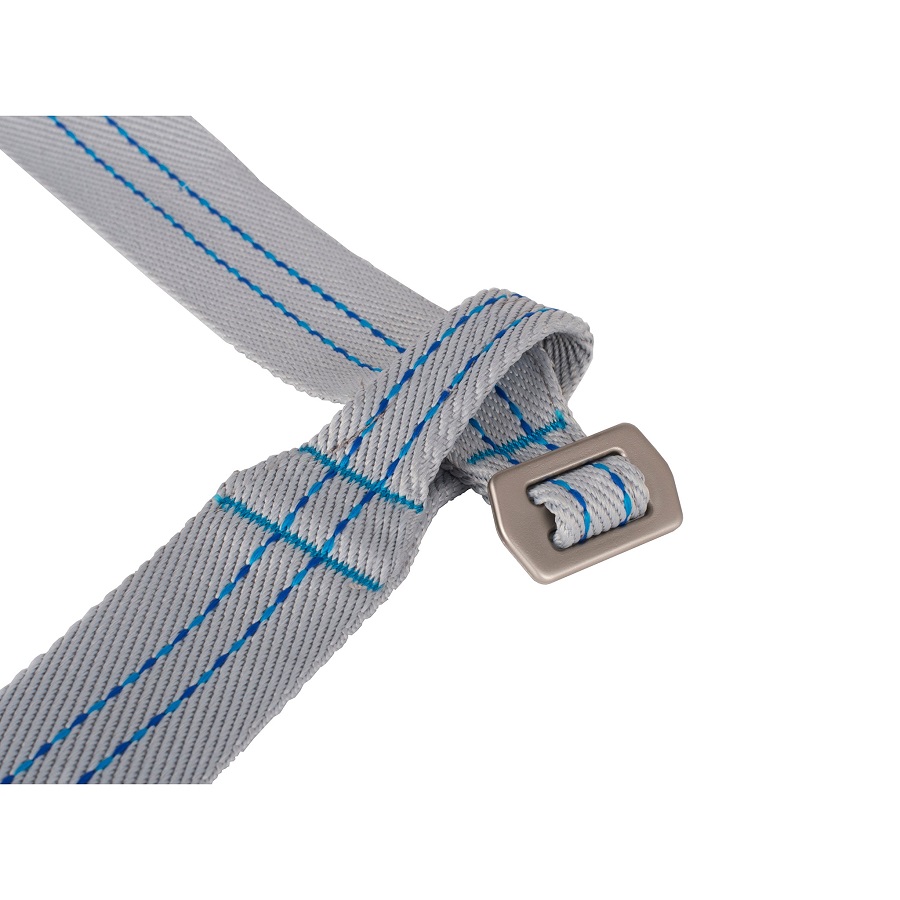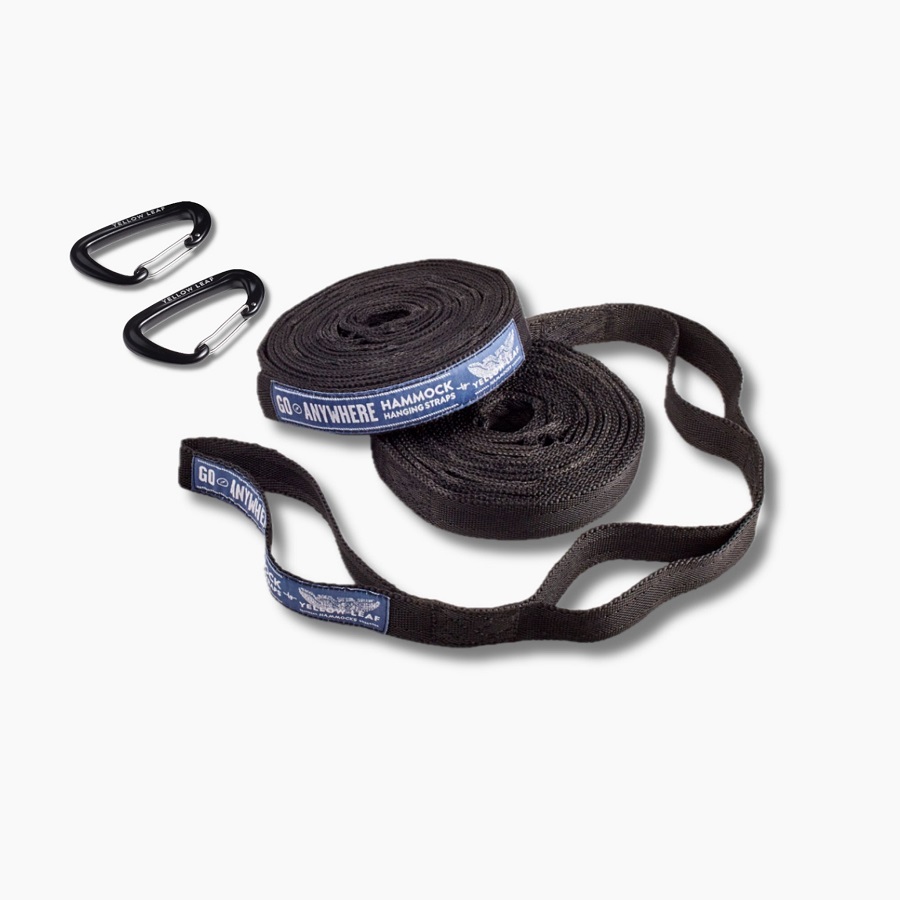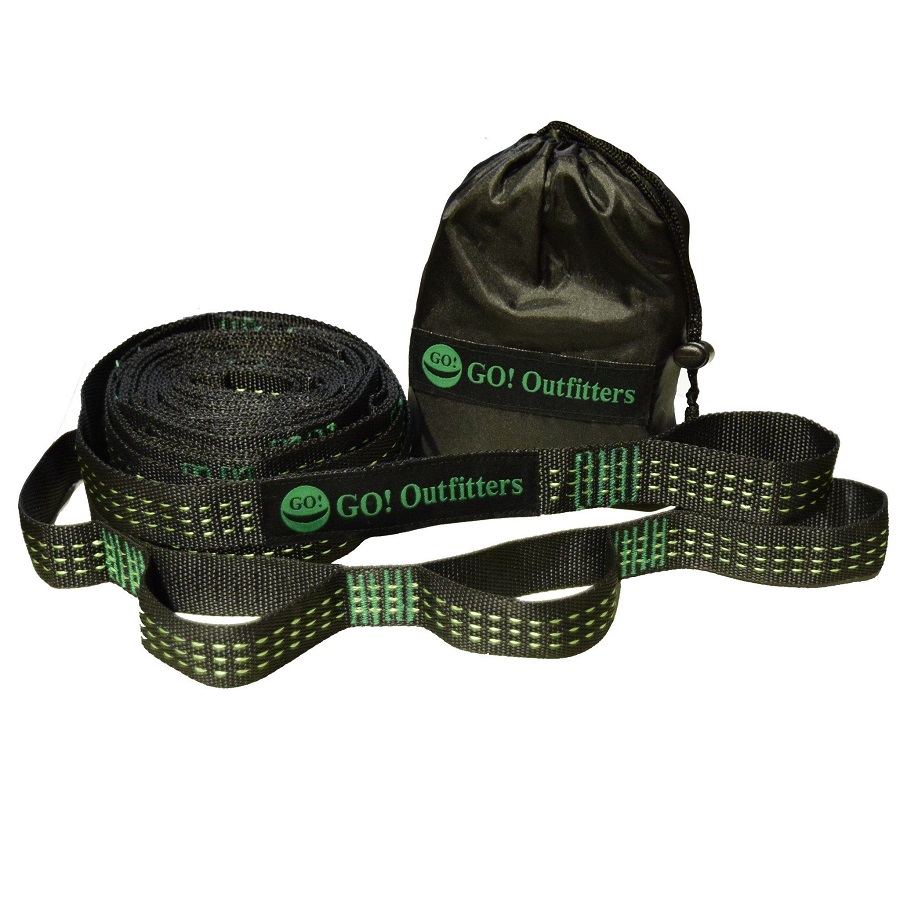The Superiority of Hammock Straps Over Ropes
For those who love the great outdoors and the gentle sway of a hammock, the transition from ropes to straps has been a game changer. Let’s explore the reasons why hammock straps are superior to ropes for hanging your hammock.
- Gentle on Trees: Hammock straps are designed to be flat and wide, distributing pressure evenly around a tree. This prevents damage to the delicate bark and underlying tissue that ropes can often cause.
- Ease of Use: No need to be a knot-tying expert. Hammock straps usually come with loops for easy attachment. This makes the setup not only faster but also more user-friendly.
- Adjustability: Most straps feature multiple loops, allowing you to adjust the length easily. This is less feasible with ropes, which may require re-tying to change the hang.
- Strength and Security: Straps are typically made of strong webbing that holds up well under weight. They offer improved security over ropes, which can stretch or fray over time.
- Environmentally Friendly: Many campgrounds now prefer or even mandate the use of straps over ropes to protect the tree population, ensuring a more sustainable camping experience.
- Versatility: Straps can be used on various anchor points, not limited to trees. Think boulders, posts, or even car roof racks – straps can handle it all.
Choosing straps over ropes aligns with an eco-conscious and practical approach to outdoor relaxation. Next time you head out with your hammock, consider the strap way – your trees and back will thank you!

Selecting the Ideal Spot for Your Hammock Setup
When choosing where to hang your hammock, safety and comfort are key. Here are some tips to help you pick the perfect spot:
- Check for Permission: Ensure hanging hammocks is allowed in your chosen area. Speak with local land managers if uncertain.
- Assess the Trees: Look for healthy, sturdy trees. Weak or young trees might not support the weight of a hammock.
- Consider the Environment: Avoid areas near water bodies or popular trails. Ensure no sensitive vegetation or wildlife habitats are around.
- Think About Safety Hazards: Check for insect nests or poisonous plants nearby. Choose a location away from these hazards.
Selecting the right spot requires awareness and respect for the environment. By following these guidelines, you can ensure a safe and pleasant hammocking experience.
Determining the Correct Distance Between Trees
When setting up a hammock, the distance between trees is crucial. Here’s how to get it right:
- Calculate Ridgeline Length: Start by knowing your hammock’s ‘Ridgeline Length’. This is the hammock’s length plus any extra material like strings or loops. Your chosen trees should be farther apart than your hammock’s total ridgeline.
- Tree Space: Aim for a space between 10 to 15 feet between trees. This depends on your hammock’s design and length. Make sure trees are not too close to avoid a tight hang, or too far that straps won’t reach.
- Height Matters: Attach straps at about 4 to 5 feet high on the trees. This ensures you’re not too low to the ground.
- Suspension Angle: For the best hang, aim for a 30-degree angle of suspension. This balances comfort and reduces strain on straps and trees.
- Check Weight Limits: Your hammock and straps have weight capacities. Ensure trees are thick and robust enough to support your combined weight without bending.
Proper distance and setup provide a flat lying surface for restful sleep and protect trees from harm. Follow these tips for a relaxing hammock experience while being kind to nature.
The Step-by-Step Process of Securing Hammock Straps
Securing your hammock with straps can be easy and quick. Follow this clear step-by-step guide to ensure your hammock is safely suspended.
- Choose the Right Tree: Pick two sturdy trees that are about 10 to 15 feet apart. Make sure the trees are healthy and robust.
- Wrap the Straps: Position the first strap around the first tree. Loop it around the trunk. The strap should sit about 4 to 5 feet off the ground.
- Thread the Straps: Pull the end of the strap through the loop on the other end. Pull to tighten the strap around the tree.
- Attach the Hammock: Hook the carabiner or clip from your hammock to the loops of the straps. Ensure it’s securely attached.
- Adjust for Comfort: Adjust the straps by selecting different loops. This will raise or lower your hammock for optimal comfort.
- Repeat for Second Tree: Repeat steps 2 to 5 on the second tree. Make sure the hammock hangs with a slight sag.
- Test Stability: Gently sit in the hammock to test its stability. Adjust if needed to ensure safety and comfort.
By following these steps, you can quickly set up your hammock using straps. This secure method protects trees and provides a comfortable hang. Enjoy your time relaxing safely in your hammock!

Fine-Tuning Your Tree Straps for the Perfect Hang
After you’ve secured your hammock straps, fine-tuning is key to a perfect hang. Here’s how to make adjustments:
- Adjust the Height: If your hammock is too high or low, simply move up or down the strap loops until the height feels comfortable.
- Test the Tension: Sit in your hammock and check for too much sag or stretch. Adjust the straps if needed to find the right balance.
- Find the Right Angle: Ensure the straps form a 30-degree angle with the tree trunk. This angle provides a comfy hang and protects the tree.
- Safety Check: Always double-check that carabiners are locked and straps aren’t frayed or weak before relaxing in your hammock.
- Consistent Hang: Use the same loops on both straps to maintain an even hang. This helps avoid tipping or uneven pressure.
By fine-tuning your straps, you create a stable and secure hammock setup. Enjoy a comfortable rest, knowing you’re hanging just right.
Key Tips for Safe and Comfortable Hammock Use
When hanging a hammock, safety and comfort must come first. Follow these tips to ensure a great experience:
- Check Strap Condition: Before use, inspect the straps for signs of wear or damage.
- Use Correct Trees: Trees should be sturdy, mature, and not showing signs of decay.
- Mind the Weather: Set up away from areas prone to flooding or falling branches.
- Hang with Care: Ensure the hammock is not too tight or too loose for optimal comfort.
- Balanced Weight Distribution: Sit gently to prevent flipping and allow the hammock to adjust to your weight.
- Have a Soft Landing: Place a pad or tarp under the hammock, just in case.
- Stay Warm: Even in summer, nights can be cool. Use a suitable sleeping bag or blanket.
- Keep Bugs at Bay: Consider a bug net if insects are a concern in your area.
Always prioritize your safety and comfort. These tips help you enjoy the hammock without risk.
Ensuring Tree Protection with Proper Strap Use
Protecting trees is crucial when using hammock straps. Here’s how you can ensure tree protection:
- Use Wide Straps: Choose straps that are wide. This reduces pressure and prevents bark damage.
- Avoid Over-Tightening: Tighten the straps to hold your weight but don’t overdo it. Excessive tightness harms trees.
- Check for Signs of Stress: Before fully settling in, look for signs of stress on the trees. If the bark compresses or cracks, readjust.
- Use Tree-Friendly Materials: Opt for materials that are less abrasive. Soft webbing is a good choice.
- Follow Park Guidelines: In protected areas, adhere to specific regulations regarding strap width and material.
- Position Correctly: Always attach straps at least 4 feet above the ground. This height helps distribute weight more evenly.
By taking these steps, you maintain the health of the trees and keep your hammocking sustainable.

Additional Uses of Hammock Straps Around the Campsite
Aside from securing your hammock, straps have various extra uses around the campsite. Here are some inventive and practical ways to use your hammock straps beyond just sleeping:
- Gear Line: Use a strap to create a gear line. Hang wet clothes, cooking tools, or other camping gear to keep them off the ground and within reach.
- Tent Support: Need extra stability for your tent in windy conditions? Extend the reach of your tie-downs by connecting straps to tent stakes.
- Emergency Tourniquet: In urgent situations, a hammock strap can serve as a makeshift tourniquet. This could be vital in a first aid scenario.
- Backpack Hanger: Keep your backpack off the damp ground at night. Loop a strap around a nearby tree and hook your bag to it.
- Pet Leash: Temporarily turn a strap into a pet leash. It’s handy if you’ve forgotten or lost yours.
- Tree Swing: Loop a strap over a strong branch and attach a sturdy stick or plank at the bottom. Now you have an impromptu swing.
- Extension for High Branches: If you’re picking fruit or need to reach higher branches, straps can extend your reach by attaching hooks or baskets.
Hammock straps are versatile tools. Get creative and you’ll find many other ways to use them for a comfortable and efficient campsite.
